Major College Football And Education Go Together Like Matt Gaetz and Drag Queens
With the college football landscape changing by the day, it's clear who sets the rules, and it's not the colleges and universities- it's the TV networks
This was the story of Howard Beale, the first known instance of a man who was killed because he had lousy ratings.
Network
I don’t write about sports much. Even though I enjoy sports tremendously, I generally find them boring to write about. Unless there’s a human interest story and/or the worlds of business and sport intersect, making greed a factor. Such is with the world of the Football Bowl System, the top level of major college football, where greed has been king this summer like never before.
Remember when colleges and universities were thought of first and foremost as institutions of higher learning? I don’t, but I thought perhaps there might be someone smarter than me among my readers who might vaguely recall those halcyon days of yore.
If that’s indeed what they were.
Because the reality today is that higher education has little to do with education. No, in order of priority, it’s more about
Money
Money
Money
Football
Money
Other sports
Money
Education
If you didn’t believe me, watching the Pac-12 Conference break up and seeing its schools swallowed by the Big 12 and the Big Ten should have been a reality check.
First, USC and UCLA decided to chase the Almighty Dollar and defect to the Big Ten last year (beginning in the 2024 season). That set off a lot of uncertainty among the remaining Pac-12 schools because losing the Los Angeles schools meant losing the LA market and the advertising potential (and, thus, money) there.
Then a few weeks ago, Colorado decided to defect to the Big 12, which effectively broke the dam. Before you knew it, Oregon and Washington were heading to the Big Ten, and Arizona, Arizona St., and Utah were off to the Big 12.
Suddenly, the Pac-12 was the Pac-4- Oregon St., Washington St., Stanford, and California. Things became even more absurd when news broke that the ACC had begun preliminary talks with Stanford and Cal. That’s the Atlantic Coast Conference discussing the possibility of taking in two schools on the Pacific Coast.
Why blow up the Pac-12? Money, of course…and TV money, specifically. If you thought the educational missions of these schools were primary, the idea of Stanford and Cal joining the ACC should disabuse you of that notion. It would be good for everyone but the student-athletes, for whom the “student” part of that equation is becoming tougher to say without spewing coffee on your keyboard.
The final words of the 1976 Academy Award–winning movie Network can be applied to current events in college athletics. This is the story of the Pac-12, the first known instance of a conference that was killed because it had lousy ratings. (Or, at least, a lousy media deal.)
Network was an apocalyptic satire of the corrosive effects of the revenue-obsessed television industry. It rang a clear bell of unsettling truth that resonates prophetically today. The film’s climactic scene featured “Mad Prophet of the Airwaves” Beale being gunned down on live TV during the show he hosted.
No coach is going to be gunned down during the middle of a game because of low ratings- so far as we know- but the East Coast TV moguls, for whom the West Coast is a suburb of Novosibirsk, regard the West as a vast TV wasteland. West Coast football games that kick off at 7:30 PT start at 10:30 ET, meaning millions of East Coast eyeballs will likely be asleep by the time the game reaches halftime.
This means lost ad dollars, translating into lost TV money for everyone, including the networks, the conference, and the schools. You’ll notice that nowhere is mentioned anything of the educational mission of any of the schools. When it comes to high-level college football, money is the only universally-understood language.
If Stanford and Cal go to the ACC, that will leave Oregon St. and Washington St. as the only remaining members of the Pac-2. Both are well-respected schools with severe handicaps in the high-level college football landscape, but they can’t play each other nine times each season. They’d each have an easy path to the conference championship game, though.
Oregon State is located in Corvallis, about a two-plus hour drive south of Portland. It’s not easily accessible, and the closest airport is in Eugene, about 40 miles away. Corvallis is a bucolic little college town for whom sleepy seems an inadequate descriptor. It’s also the kind of town TV networks hate; for them, it may as well be located on the tip of the Kamchatka Peninsula.
Much the same is true for Pullman, WA, home of Washington State. It’s in the middle of the Palouse, not far from Spokane, but it’s even less accessible than Corvallis. Plus, the Palouse is about as featureless as Saudi Arabia’s Empty Quarter. It’s also the answer to the question, “What college town do TV networks hate even more than Corvallis, OR?”
If you’ve ever been to the Palouse, you know what I’m talking about. It’s like Gertrude Stein’s description of Oakland- “There’s no ‘there’ there.”
Oregon St. and Washington St. will end up in a conference somewhere in the West. As former Pac-12 schools, they have name recognition and a certain sympathy factor- some conference will take pity on them and invite them aboard.
The sad part of this system…well, the saddest part, because there are several unfortunate and ridiculous aspects…is the hypocritical effort made by university presidents and TV networks to preserve the image of college football. They’re trying to maintain the air of tradition, of history, of bygone days when strapping young men played for the love of the game and to defend their school's honor.
Those days are long gone- if they ever truly existed- but maintaining that facade helps to fuel the “feeling” of college football- crisp fall afternoons, tailgate parties, alumni back-slapping one another- young men giving it “the old college try.” Today, though, it’s all about the money- millions and millions of dollars going to the networks, the schools, the advertisers…everyone but those playing the games.
Sure, some players at some schools may now make money off their name, image, and likeness (NIL), but those dollars are very unevenly distributed. Most major college football players still see $0.00 in their bank accounts. If they’re on an athletic scholarship, they can’t even hold down a job to make expense money. Thus, many players whose efforts ensure glory for their schools and enrich many associated with the game see no financial benefit themselves and are forced by NCAA rules to live like paupers.
Isn’t it time we lost the hypocrisy surrounding major college football? There’s nothing wrong with enjoying the game or the excitement surrounding it, but colleges and universities must stop exploiting those who play it. Schools have treated scholarship athletes like chattel for too long- as if granting a free education should be payment enough. While that’s certainly not nothing, it’s not nearly enough, not when the games generate millions in revenue for colleges and universities, in most cases funding a school’s entire athletic program.
It’s about time colleges and universities recognize that the players are at least equal partners in the business of major college football, for without their efforts and the risks they incur, there would be no business. If the players decided to walk out of practices across the country tomorrow, billions of dollars would be imperiled. Colleges, universities, and TV networks would have no choice but to stop counting their money and listen.
And perhaps they’d finally come to understand that it’s time to stop exploiting 18-22-year-old men because they can. It’s time to do the right thing by them and cut them into the deal. Few will have a future in the NFL, and the overwhelming majority will pursue careers in something other than football. They shouldn’t have to remember their playing days as a time when they were exploited by TV networks and school administrators who didn’t give a damn about them.
Of course, I’m under no illusion that colleges or universities will do the right thing. There’s too much money and greed involved. Changing the current system means schools would have to take a smaller piece of the pie…and that would be tough for them to agree to.
Who says money isn’t the root of all evil?





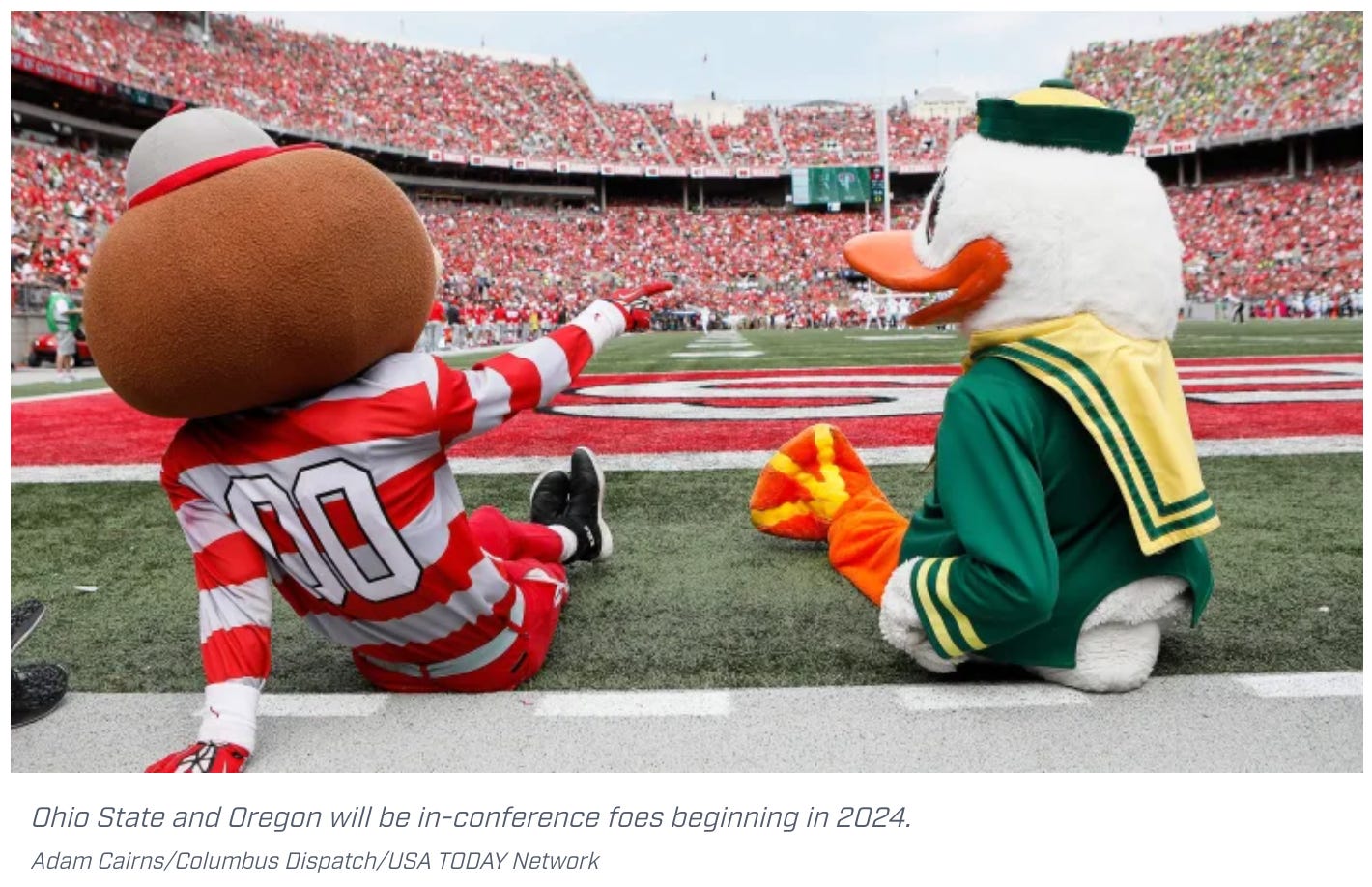
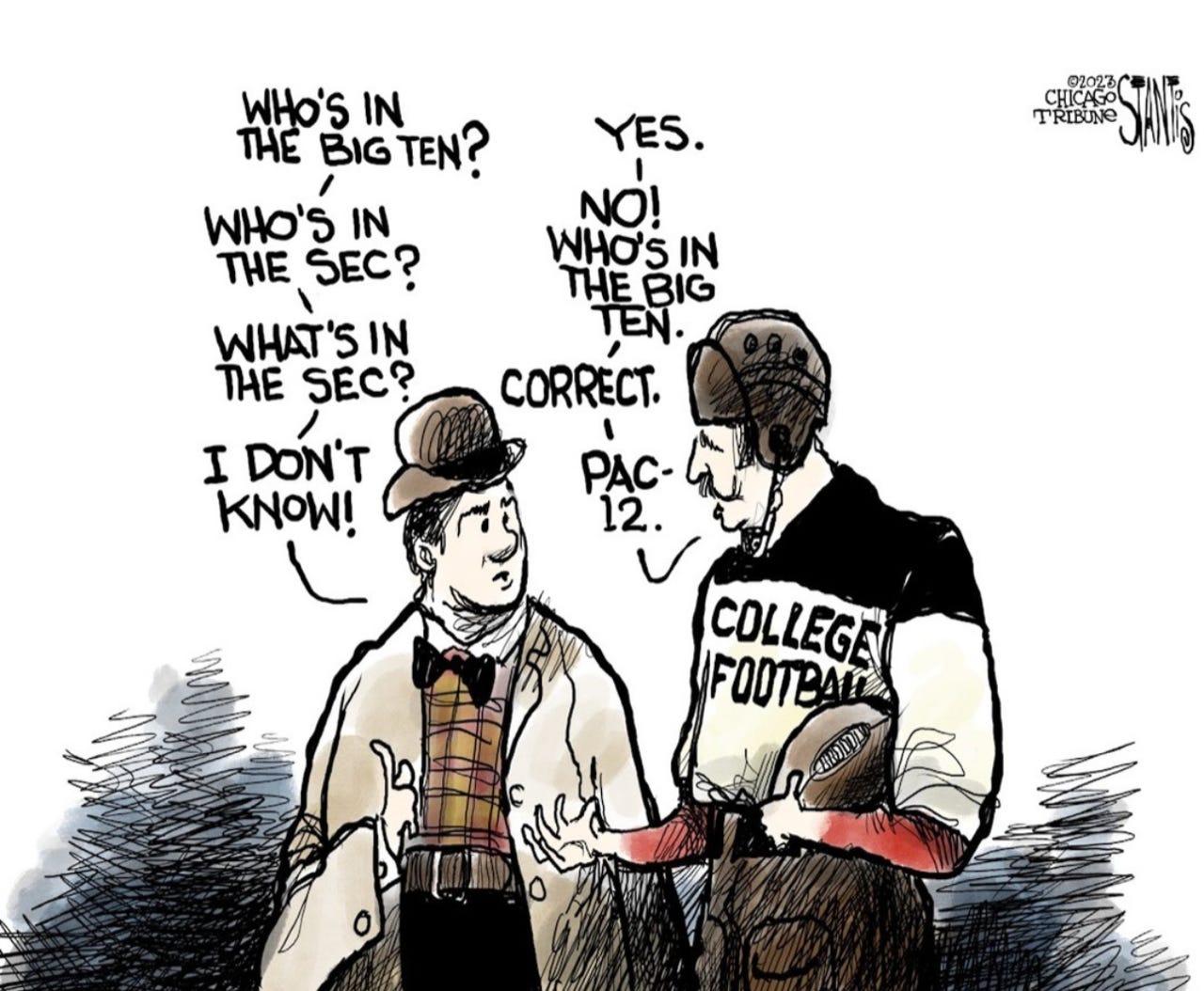
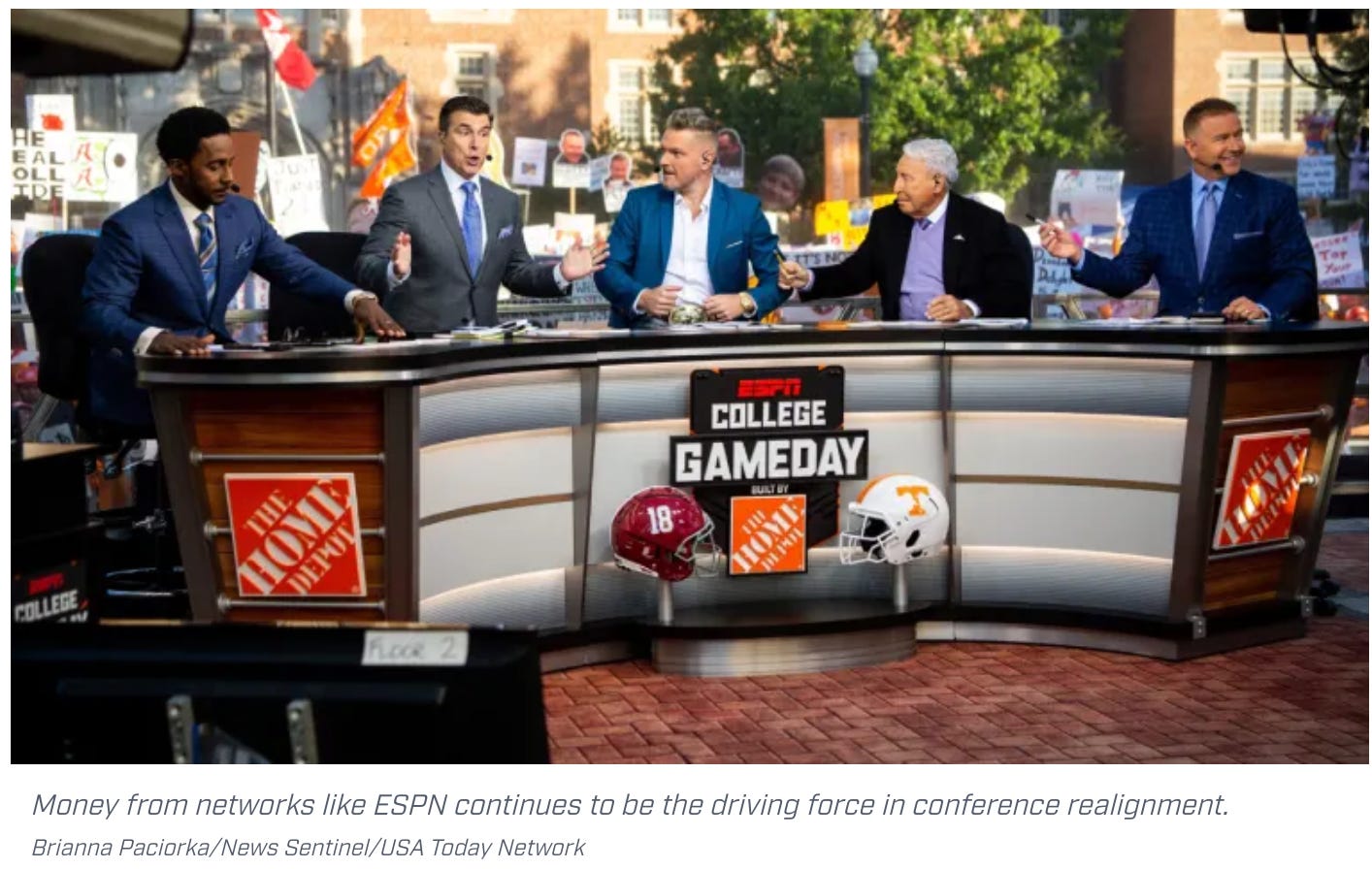
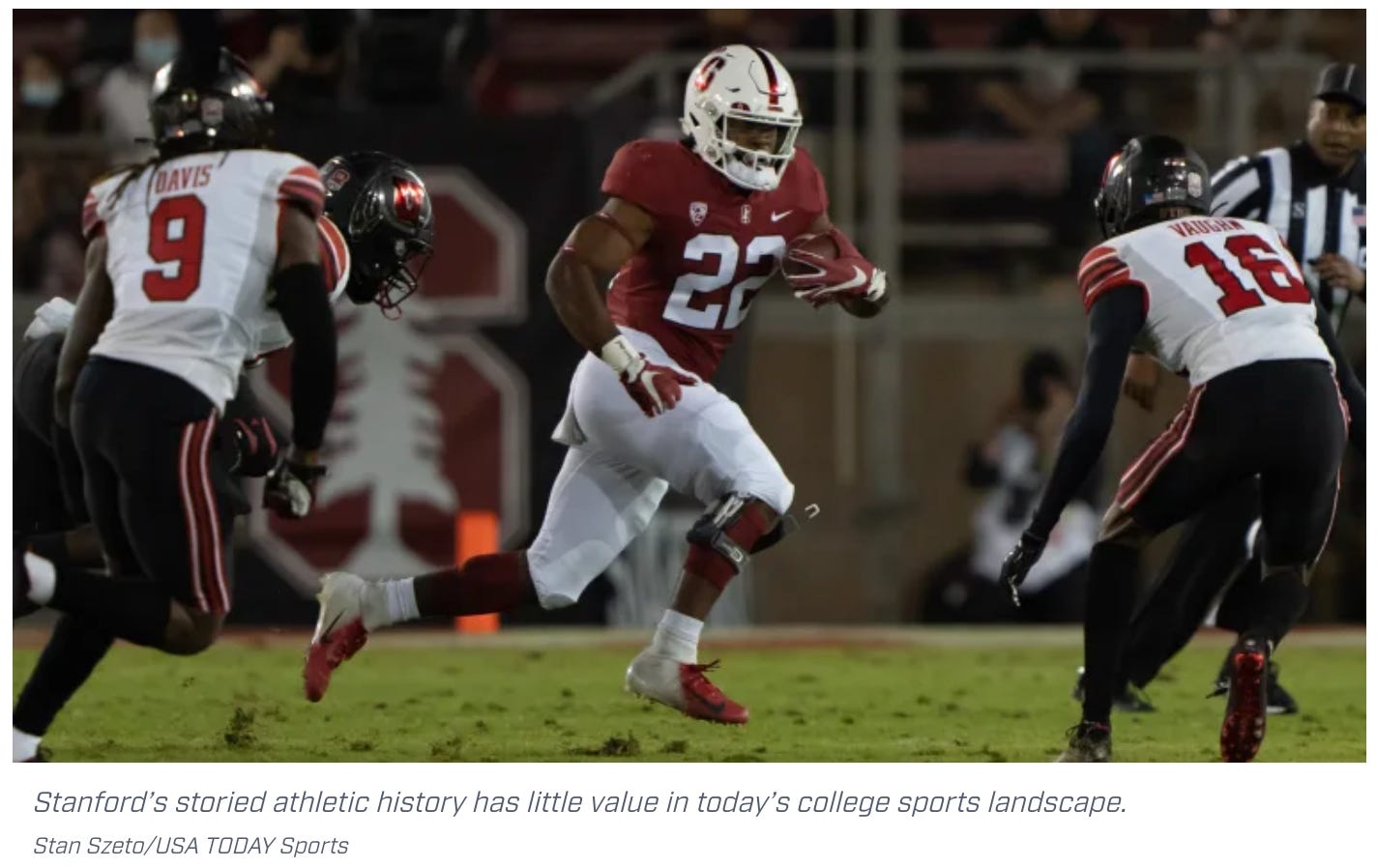

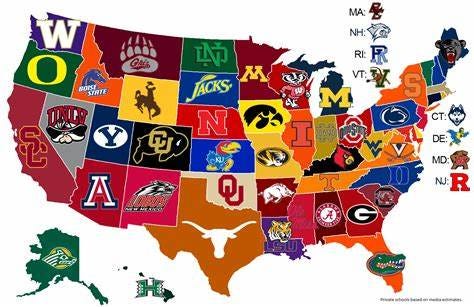
Watching these established conferences get disembowled then reassembled into a monster with no legs and arms where the eyes ought to be has been rather disgusting even to someone on the outside who doesn't otherwise give a sh!t.